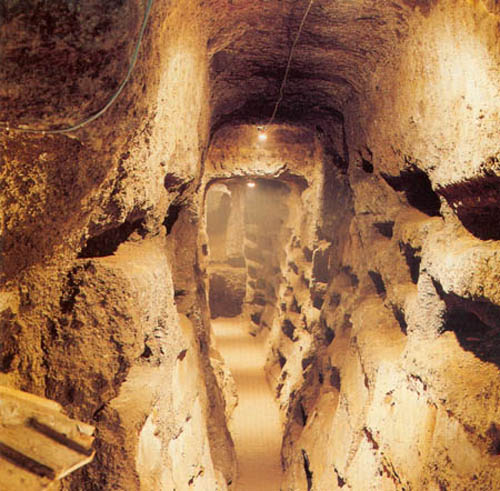Experience The Historic Catacombs of Rome


Most of us have heard about Rome’s catacombs at some point in our lives. These are ancient underground burials, dug into the rock under the city of Rome itself. There are more than forty of these catacombs, some of which have only come to light in recent years.
These catacombs are known best as burial places for Christians, but they have also hosted pagan burials as well as Jewish tombs. The catacombs came about around the second century, since there was a minimum of available land for burial and cemeteries were growing overcrowded.
The land in the general vicinity of Rome isn’t enough for regular burials, but the soft volcanic rock the city is located on is easy to tunnel in. It’s softer before the air touches it, hardening later. The city has many kilometers of tunnels, and in some places, they’re up to four stories deep.
Anyone with an interest in early Jewish or Christian art should take a trip to the catacombs. The incredible frescoes and sculptures located here represent the majority of artistic examples of the cultures prior to the fourth century.
Romans originally cremated their dead. However, at around the second century, it became popular to bury the burnt or unburnt remains of loved ones instead. In addition, Christians preferred this method, as burial was considered important for bodily resurrection.
The first big catacombs were carved through the rock outside the city, since laws at the time forbade burials inside the city limits. These were originally used not just for burial, but for memorials and religious celebrations of Christian martyrs, although they were never used for other regular worship.
In and around Rome, there are forty known catacombs, all built along roads such as the Via Ostiense and Via Appia. The catacombs often are named after saints such as Sebastian and Calixtus, who are believed to be buried in them by some.
Enormous systems of passages were built by these early Christian excavators, all between seven and twenty meters below the earth’s surface, taking up an area of about two and a half kilometers square. The levels are joined using narrow stairways, with passages about three feet wide and eight feet tall. Burial niches are located in the walls of the catacombs.
These relatively small niches contained bodies. Special burial chambers were also built for wealthier Christians. Frescoes and carvings in these tombs made them look much like mainstream Roman ones.
With the rise of Christianity to a status as a state religion, the practice of burial in catacombs declined, though this did not happen right away. As the dead were buried increasingly in churchyards, the catacombs became used only to celebrate the martyrs.
When Rome was sacked by northern invaders, these catacombs were ransacked, and by the tenth century, they were scarcely used, and all holy relics had been moved above ground. After this point, the catacombs were forgotten until the late sixteenth century, when they were rediscovered.
Over the centuries, these excavations were intermittently explored, though professional studies weren’t published until the nineteenth century. They now act as an important early Christian monument, and are maintained by the Vatican. Author: Larry Pocobor
Photo: Vatican (Catacombs of Latium)






